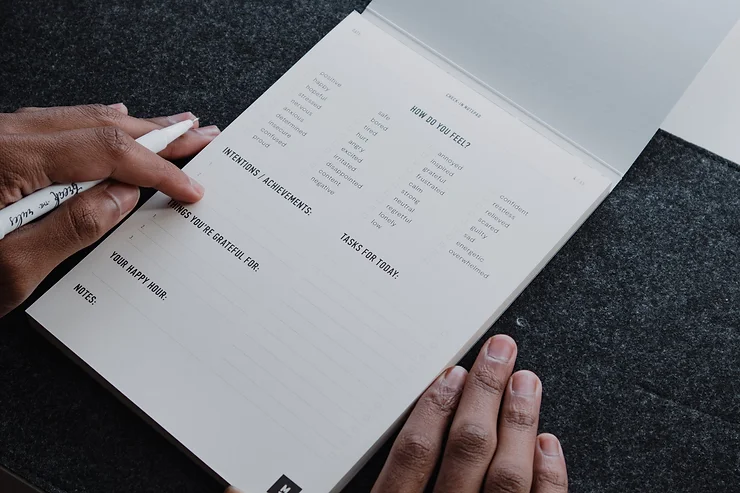Motivation is what gets you started. Habit is what keeps you going – Jim Ryun
Dear friend,
Have you ever tried to implement a new habit, e.g., doing sports, reading, or going for a walk, or to stop a habit, e.g., smoking or eating candy?
It’s not that easy. In the beginning, implementing a new habit takes a lot of discipline. We need to consistently perform it and motivate ourselves until it is set.
However, we can greatly increase our chances of successfully implementing a new habit if we “design” it properly. The more sophisticated the design, the less discipline will need to perform it consistently.
For instance, people often ask me how I can work full-time (working long hours, traveling a lot, etc.) and still do sports 6x a week. The answer is that I designed this habit of doing sports in a way that the chances to actually do it are maximized. I had to find the right “trigger” so that it’s guaranteed that I will perform this habit.
In today’s article, I will write about how habits work by deconstructing them into a simple model, why habits and thus this model are so powerful, and how you can successfully implement new habits, too.
Summary:
- Basically, every habit consists of 3 parts: (1) trigger (2) behavior (3) reward
- Habits can emerge outside our consciousness or can be deliberately designed
- No matter what, the stronger a habit is established, the less we think about it, e.g., brushing our teeth or taking a shower
Practical advice:
- Make sure to pick a trigger that you can strongly rely on and allow you to perform the habit consistently
- The reward we provide ourselves once we performed a habit is a great lever as well to lower the amount of willpower required
- To increase the chances that we form a new habit, we should write down the habit: “When … (trigger), I do … (actual habit) so that I … (reward)
How habits work
Author and writer of the well-known book “the power of habits”, Charles Duhigg, developed an easy but powerful model to illustrate how habits work: Basically, every habit consists of 3 parts: (1) trigger (2) behavior (3) reward.
The (1) trigger can be everything as long as it is consistent: A certain time (6 pm), event (waking up), place (your bed), behavior (your dog barking), etc.
The (2) behavior is the actual habit, such as brushing your teeth, reading a book, working out, watching the news, etc.
The (3) reward can also be everything as long as it is consistent: You treat yourself with some candy (after a study session), you get a boost of dopamine (after overcoming your fear), you feel energized (after a nap), you feel clean (after showering), etc.
Why habits are so powerful
Habits can emerge outside our consciousness or can be deliberately designed. They often occur without our permission but can be reshaped. They shape our lives far more than we realize.
For instance, the science of habits is used to sell products. Almost every major retailer, from grocery chains to investment banks to the postal service, has a marketing sub-department devoted to understanding not only our shopping habits but also our personal habits to more efficiently market to us. That’s why toothpaste gives us a clean and tingly feeling or why cleaners of every kind smell good even though from a dental health or sanitation perspective we wouldn’t need that (or it’s even sub-optimal).
Habits are such a powerful tool because they make us do things on autopilot. No matter what, the stronger a habit is established, the less we think about it, e.g., brushing our teeth or taking a shower.
Based on Charles Duhigg’s book and the habit model, I formed several new habits, most of which I perform consistently on autopilot, i.e., I don’t even think about doing them anymore. For example, I read at least 10 minutes every day, journal for 5 minutes every day, do sports 6x a week, take cold showers, or go for a walk every day. All these things required a great amount of discipline in the beginning, but as I performed them consistently, habits formed.
How to form a new habit
Coming back to the question of how I can work full-time and regularly do sports the answer is clear: I just had to design a proper habit.
In this case, I had to make sure to pick a trigger that I can strongly rely on and that allows me to perform the habit consistently. In my case, before I go to bed, I prepare my sports outfit incl. shoes and already put on my sports t-shirt. Once I wake up, I brush my teeth, drink a good amount of water and a scoop of creatine, and go to the gym.
Cues that didn’t (promise to) work are “before dinner”, “after dinner”, “after finishing work”, “before going to bed”, etc. While these “temporal cues” are very reliant, they didn’t allow me to perform the habit consistently. Once my workday started, it’s highly unpredictable when it ends, I have dinner, or go to bed. This uncertainty makes it very difficult to form a habit.
The key to forming a habit is to do it as consistently as possible. In the beginning, we’ve to invest willpower first. The better we design the cue, though, the less willpower will be required. Moreover, the reward we provide ourselves once we performed a habit is a great lever as well to lower the amount of willpower required. For instance, if you love smoothies, you can reward yourself with a smoothie after a workout.
To increase the chances that we form a new habit, we can write down the habit: “When … (trigger), I do … (actual habit) so that I … (reward). For instance, “when I wake up and brushed my teeth, I go to the gym for a 40-minute workout so that I feel energized and motivated for the day and stay healthy and fit for my whole life”.


